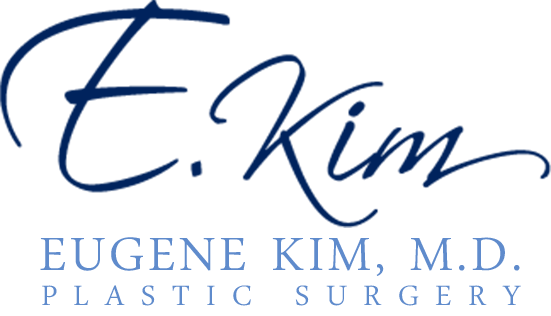Liposuct ion is a popular plastic surgery procedure that aims to remove excess fat from specific areas of the body. This procedure is designed to sculpt the body and create a more contoured appearance. Many patients turn to liposuction to address stubborn areas of fat that are resistant to diet and exercise. In this blog post, we will delve into the possibilities of fat removal with liposuction, including how much fat can be safely removed from an area. Board certified plastic surgeon Dr. Eugene Kim provides liposuction to patients in Beverly Hills, Los Angeles, Santa Monica, West Hollywood, CA, and surrounding communities.
ion is a popular plastic surgery procedure that aims to remove excess fat from specific areas of the body. This procedure is designed to sculpt the body and create a more contoured appearance. Many patients turn to liposuction to address stubborn areas of fat that are resistant to diet and exercise. In this blog post, we will delve into the possibilities of fat removal with liposuction, including how much fat can be safely removed from an area. Board certified plastic surgeon Dr. Eugene Kim provides liposuction to patients in Beverly Hills, Los Angeles, Santa Monica, West Hollywood, CA, and surrounding communities.
Understanding Liposuction and Its Purpose
Liposuction, a cornerstone in the field of plastic surgery, targets the elimination of fat from areas of the body where it often stubbornly lingers, despite dedicated efforts through diet and exercise. This procedure is not a one-size-fits-all solution for weight loss; rather, it’s finely tuned towards enhancing and refining the body’s shape. Patients commonly seek out liposuction for treatment in areas such as the abdomen, thighs, hips, buttocks, arms, and neck, aiming for a more aesthetically pleasing contour. The process involves a skilled surgeon making small incisions to insert a cannula—a slender tube designed specifically for this process. Through these incisions, the cannula reaches the fat deposits, and with the aid of a vacuum device, extracts the unwanted fat, sculpting the body into a more desirable form. The essence of liposuction lies in its ability to sculpt; it meticulously removes fat to redefine the body’s natural contours, offering patients a path to achieve their aesthetic goals. This precision, combined with the surgeon’s expertise, allows for tailored outcomes that align closely with individual expectations. As technology progresses, new methods enhance the procedure’s efficiency and effectiveness, further broadening the possibilities of what can be achieved through liposuction. It is a deeply personalized journey, with each step carefully planned to ensure the safety and satisfaction of the patient, emphasizing the procedure’s role not just in physical transformation, but in boosting confidence and well-being.
The Safety Limits of Fat Removal
When considering the removal of fat through liposuction, the paramount factor is always the safety and well-being of the patient. There are indeed limits to the volume of fat that can be extracted in a single session, which is meticulously determined based on individual health status, the specific area undergoing treatment, and the technical expertise of the surgeon. Overzealous removal of fat can lead to a host of complications, including the potential for uneven body contours, dimpling of the skin, and various skin irregularities that may mar the overall aesthetic outcome. These safety thresholds are established to minimize risks and ensure that the benefits of the procedure far outweigh the potential for adverse effects.
In practice, the American Society of Plastic Surgeons advises that there is a maximum limit of fat that should be removed in an outpatient setting, commonly regarded to be around 5 liters, or approximately 11 pounds. It is crucial to understand that surpassing this limit not only escalates the chance of immediate postoperative complications but can also impact long-term health.
To safeguard against these risks, a thorough pre-surgical evaluation is indispensable. This assessment encompasses a comprehensive review of the patient’s medical history, current health condition, and an analysis of the treatment area to ensure that the planned volume of fat removal aligns with safe practice guidelines. Engaging with a board-certified plastic surgeon, experienced in performing liposuction, further ensures adherence to these safety measures, leveraging their expertise to achieve the desired aesthetic results without compromising the health of the patient.
Factors Influencing the Amount of Fat Removed
The effectiveness and safety of liposuction, and the volume of fat that can be successfully removed, are influenced by a multitude of patient-specific factors. Among these, the individual’s skin elasticity plays a critical role. Skin that demonstrates a higher degree of elasticity is more likely to retract smoothly over the newly contoured areas, leading to an aesthetically pleasing outcome. Conversely, less elastic skin may not adapt as well, potentially resulting in loose or sagging skin post-procedure.
Another significant factor is the thickness of the fat layer within the targeted area. Thicker layers may allow for a more substantial volume of fat to be removed, whereas thinner layers limit the amount that can safely be extracted without compromising the natural contours of the body or risking the integrity of the skin.
Furthermore, the overall health and baseline weight of the patient are crucial considerations. Individuals who maintain a weight close to their ideal and possess a stable health profile tend to recover more effectively and are less prone to complications during and after the procedure. It’s also important to acknowledge that liposuction is best suited for those seeking refinement and contouring rather than significant weight loss. Therefore, a thorough evaluation of these factors is essential to setting realistic expectations and achieving optimal results while ensuring the highest standards of safety and care in the liposuction process.
The Role of Technology in Maximizing Results
In the realm of liposuction, technological advancements have significantly enhanced the capabilities and outcomes of this cosmetic procedure. Innovations such as laser-assisted liposuction and ultrasound-assisted liposuction stand at the forefront, offering refined techniques that contribute to the precision and efficiency of fat removal. Laser-assisted liposuction employs laser energy to effectively liquefy fat cells prior to extraction. This method not only facilitates a more seamless removal process but also minimizes trauma to surrounding tissues, leading to a smoother recovery experience for the patient. Similarly, ultrasound-assisted liposuction utilizes high-frequency sound waves to disintegrate fat cells, making them easier to remove and further improving the safety and effectiveness of the procedure.
These cutting-edge technologies play a pivotal role in optimizing the liposuction process, allowing plastic surgeons to sculpt and contour with unprecedented accuracy. The benefits extend beyond the immediate results of fat removal, as these technologies can also contribute to reduced postoperative pain, decreased swelling, and quicker recuperation times, enhancing the overall patient experience. Moreover, the precision afforded by these technological tools can lead to more consistent outcomes, aligning closely with patient expectations and desires. As the field of plastic surgery continues to evolve, the integration of these advanced techniques into liposuction procedures underscores the commitment to achieving the highest possible standards of aesthetic excellence while upholding patient safety and comfort.
Preparing for Liposuction: Expectations vs. Reality
Entering into the journey of liposuction, it’s imperative for individuals to align their hopes with what is realistically achievable. Liposuction offers a pathway to refine and enhance the body’s contours, not a drastic solution to weight loss. Understanding this distinction is vital. The process is highly effective for targeting specific areas of fat accumulation that persist despite a healthy lifestyle, but it is not a panacea for overall weight reduction. Additionally, the outcome of the procedure is influenced by various factors, including the individual’s body type, the area being treated, and the volume of fat being removed.
Another crucial aspect to consider is the commitment to post-procedure care. Adherence to the surgeon’s guidance, such as taking the prescribed medications, attending follow-up appointments, and possibly adjusting lifestyle choices, plays a significant role in the success and longevity of the results.
Patients should also prepare for a recovery period that may include temporary limitations on physical activity. Understanding and accepting the timeline for recovery and the stages through which the body will pass post-liposuction is essential for setting realistic expectations.
An open and honest discussion with a board-certified plastic surgeon can provide valuable insights into what one can expect from liposuction. This dialogue is a cornerstone of the preparation process, offering a clearer picture of the anticipated results and the journey to achieving them. Armed with this knowledge, patients are better positioned to make informed decisions and embark on their liposynthesis path with confidence and realistic expectations.
The Recovery Process and Maintaining Results
In the aftermath of a liposuction procedure, individuals will navigate through a recovery phase characterized by some initial bruising, swelling, and a degree of discomfort around the areas that were treated. It’s crucial during this time to adhere closely to the post-operative care plan outlined by your surgeon. This may include the use of compression garments which play a vital role in aiding the healing process, helping to control swelling and shape the body according to the new contours formed by liposuction.
As the healing progresses, these symptoms will gradually subside, revealing the procedure’s outcomes. It is important to note that patience is key, as the final results can take several weeks to fully manifest. Throughout this period, maintaining open communication with your surgeon is beneficial for addressing any concerns and ensuring a smooth transition through each recovery stage.
Once recovered, sustaining the results of liposession demands a commitment to a healthy lifestyle. Engaging in regular physical activity and adhering to a balanced diet are fundamental in preserving the sculpted contours achieved through the procedure. While liposuction removes fat cells from the treated areas, the importance of these lifestyle choices cannot be overstated in preventing new fat deposits from forming and affecting the long-term success of the surgery.
Ultimately, the journey following liposuction is as much about embracing a healthier, more active lifestyle as it is about the immediate aesthetic improvements. By committing to these principles, individuals can enjoy and maintain the benefits of their liposuction procedure for years to come.
Contact the Office of Beverly Hills Plastic Surgeon Dr. Eugene Kim
Click here see more plastic surgery procedures and treatments performed by Board Certified Plastic Surgeon, Dr. Eugene Kim on patients in Beverly Hills, Los Angeles, West Hollywood, Santa Monica, CA and surrounding areas or call 310-271-6996 to schedule a consultation.
